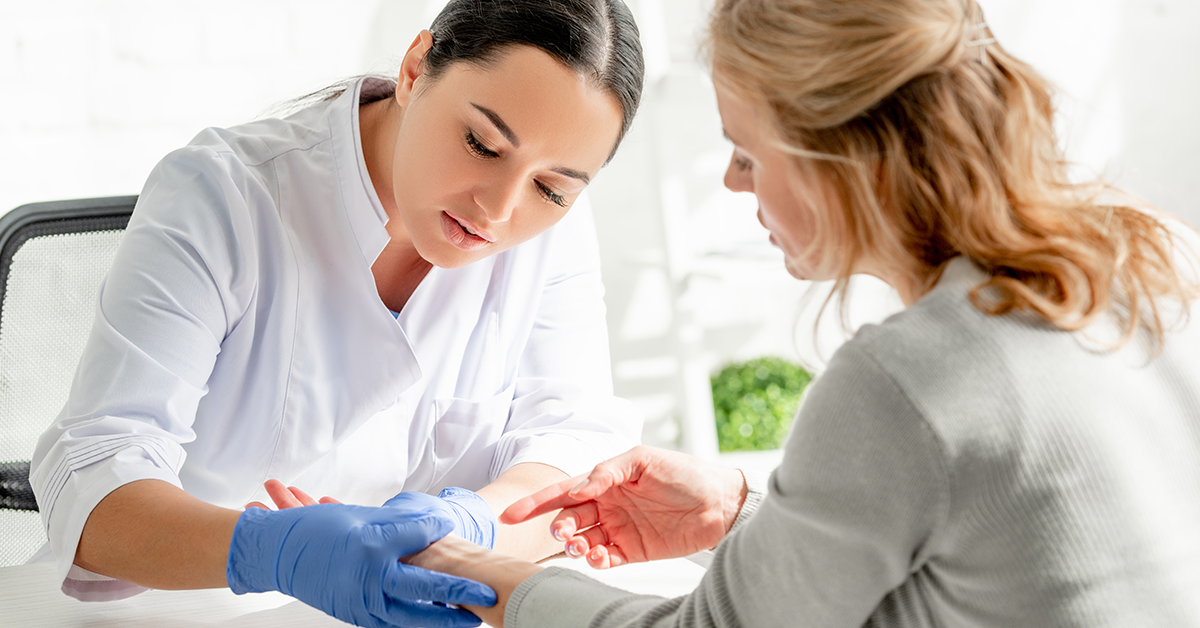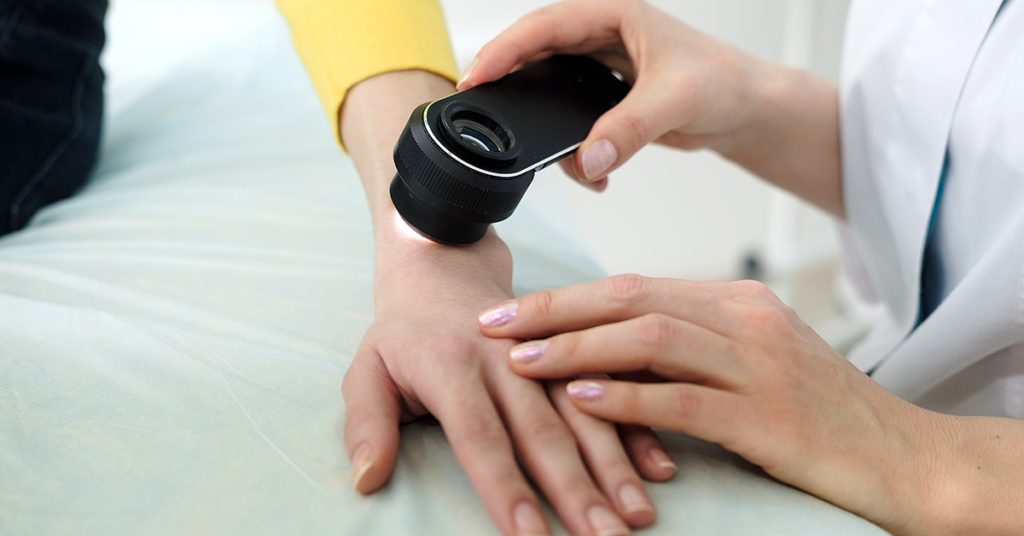
What is a Dermatology PA?
When you go to a dermatology clinic, your dermatologist might not be the only medical professional you encounter while undergoing treatment. Your Botox might be injected or your acne medication might be prescribed by someone called a physician assistant. Unlike a dermatologist, a dermatology physician assistant is not a board-certified doctor, but has been formally trained for clinical care.
What does a Dermatology PA do?
A PA’s job in a dermatology clinic may be very similar to the dermatologist’s. The PA may operate independently on patients and provide a wide array of surgical and non-invasive treatments. However, they must always operate under the guidance or supervision of a board-certified dermatologist.
The services a dermatology physician assistant can provide depends on the:
- Level of training and experience
- Nature of work at the dermatology clinic, i.e. the level of independence given to the PA at the office
- State laws
All PAs may also not perform all types of procedures, regardless of the state laws and clinic’s regulations. For example, some may only perform cosmetic procedures while others may only administer medical dermatological services.
Services provided by Dermatology PAs
Some of the services a dermatology physician assistant can provide are:
- Take history and maintain patient records
- Evaluate and diagnose skin conditions
- Perform physical examinations
- Order tests and analyze test results
- Prescribe medication
- Discuss preventative care
- Assist in surgery
- Perform minimally invasive or non-invasive procedures
Procedures like biopsies, wide excision, and cryotherapy are performed regularly and administered by most PAs.
Moh’s micrographic surgery, a complex procedure in which layers of skin containing cancer cells are pared off until only cancer-free layers remain, is performed by selective PAs.
Common cosmetic procedures that aesthetic dermatology PAs perform regularly are botox injections, cheek and lip fillers, and chemical peels.
There are two major aspects to the responsibilities of a PA:
- Seeing patients and providing patient care
- Maintaining patient records
A workday for a PA can begin any time depending on clinic hours. A typical office day would start at 9 AM and end at 5 PM; some PAs work five days a week, others lesser.
- Arriving at the office
The first order of business for the day is reviewing messages and charts and signing off on dictations and medication prescriptions. The work of a medical assistant makes the paperwork procedure much easier.
Patient interactions begin at 9 AM. If a PA works independently, they tend to patients with the medical assistant. In other cases, the PA accompanies the dermatologist in inpatient encounters. The physician and the PA then collectively come to a diagnosis, devise a treatment plan, and prescribe medication.
- Break
For PAs that work shorter hours, lunch break may begin at 11:30 AM. Those working till 5 PM prefer to take a break at 1 PM.
- Patient Care and Services
The number of patients visited depends on the PA and the patient influx. This can range from anywhere between 30 patients throughout the day, or even 30 just before lunch break! Many PAs have repeat patients that come in regularly for check-ups and take up a significant portion of the patient pie chart.
Over the day, people of all ages and sizes visit the clinic, from babies to elderly citizens; with different health concerns. As mentioned before, PAs can be selective about which patients they tend to. For example, one might choose a niche specialty such as pediatric dermatology.
Additionally, many different procedures are carried out daily, ranging from simple Botox and chemical peels to punch-and-shaves and Moh’s surgery. These may be performed by the PA alone or under the supervision of a dermatologist if the PA is under training.
Sometimes, since such a wide range of clients are visiting, even independently performing PAs must consult the head dermatologist for advice. The patient may present with unusual symptoms or reactions to medication, in which case, the dermatologist must step in and provide further plan and prognoses.

- Paperwork
With every patient, a patient record must be updated. This can be physical paperwork or an electronic medical record, depending on which system the clinic prefers. Although EMRs are faster, some traditionalists prefer physical paperwork and patient charts due to the ease of filing and quick reference. Some clinics may also use a hybrid system of record-keeping, and medical assistants usually help out in this task.
Paperwork seems like small work, but in fact, it utilizes quite a huge chunk of office hours. Most PAs prefer to sign off on any dictations and complete all records during office hours to prevent further workload piling up the next day.
Perks of being a Dermatology Physician Assistant
- Working Hours
This profession inclines to offer a pleasant lifestyle and work-life balance, which makes it alluring to many fresh students and skillful PAs. The hours are flexible and many PAs can even choose to work only 3 days a week. Alternately, some PAs choose to work the week however spend shorter office hours every day.
- Flexibility in Training
As mentioned before, the services a dermatology PA provides depend on the level of training they undergo. Some PAs do not perform specific surgeries since they haven’t been trained for them. Others may deal with only cosmetic dermatology instead of medical ailments. One of the best parts about being a dermatology PA is having the freedom to pursue what interests you.
- A Wide Array of Patients
Skin concerns like acne, rosacea, and psoriasis are very commonplace. However, they may present differently in the elderly as compared to teenagers. So a PA gains an extensive overview of all skin problems and their progression over the ages. Usually, skin concerns require follow-ups which help build a stronger physician-patient relationship.
- Strong Relationship with the Patient
A dermatologist or dermatology PA is one of the key people who can help people feel good. A patient may walk into the clinic with severe and apparent skin concerns and some emotional baggage attached to it. Receiving dermatological treatment from a physician or assistant that is empathetic and considers their concerns seriously is a great boost for their self-esteem.
Follow-up visits are very common and allow the connection between the dermatology PA and the patient to deepen. At the end of the day, they get to help people not only look good, but also help them feel good.
- Autonomy and In-office Support
Independence is pretty much subjective to the person. In the beginning, unusual presentations of a disease might throw a PA off or they may not be able to conclude a diagnosis. In such cases, a dermatologist will always be at hand. Because of over the years of practice, they are able to gain more confidence and independence. However, support from the head dermatologist and medical assistants is always present. This allows room for personal and professional growth, while always having a supporting team on standby.
See Also: Common Challenges Faced By Physicians In 2021
Conclusion
Considering all the above-mentioned benefits, the job of a dermatology PA is highly sought after, which makes it a more conscientious option as compared to others.
Precision Hub is an online resource where you can find a diverse array of reading material regarding medicine and health. You can find easy-to-read articles in our blog section to review anything from simple food allergies to medical coding for diabetes mellitus. You can check out our blogs and let us know your thoughts in a comment below!








No comment yet, add your voice below!